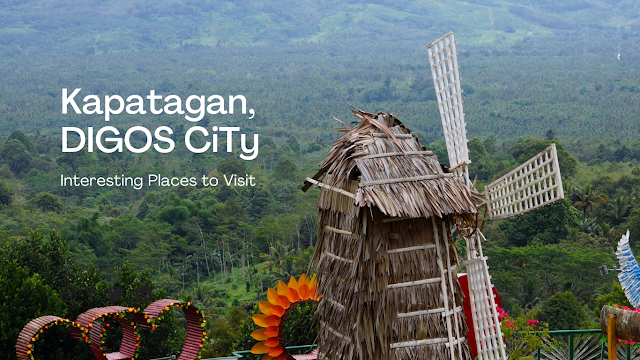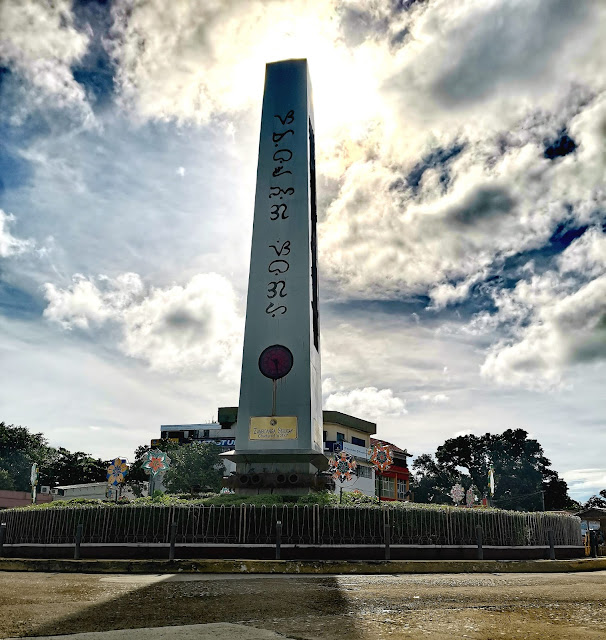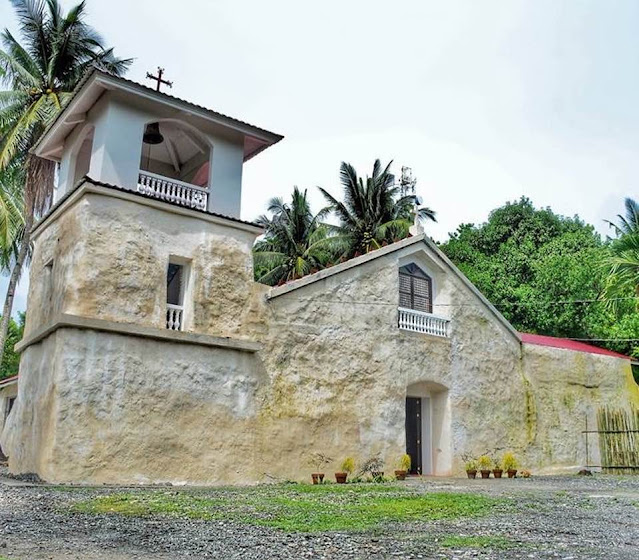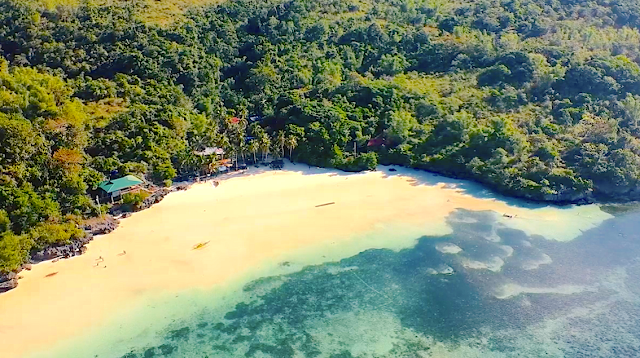Bayog, Zamboanga Del Sur
A Journey Through History
The roots of Bayog, Zamboanga Del Sur, can be traced back to the 1950s when pioneers settled in this pristine area. The journey to access essentials like food required arduous trips through the jungles of Baking, Lakewood, Nilo, and Maragang, or across swampy terrains like Lamare, Galit (now Villacastor), Gaulan, and Diplahan, often navigating Sibuguey River on bamboo or wooden rafts to reach Malangas.
In 1953, a surge of immigrants found their home in Bayog, which was initially a barrio under the Municipality of Malangas. Named after the abundance of "Bayog" trees, the area quickly grew in population and significance.
A Strive for Independence
By 1957, opportunities in agriculture, business, and employment attracted even more settlers. The construction of the SAMAR MINING COMPANY (SAMICO) road from Bobuan to Pamintayan further fueled the town's expansion. In 1959, Bayog had outgrown its barrio status, leading to the creation of a new barrio, now known as Barangay Kahayagan. When the Municipality of Buug was established in 1960, Bayog and Kahayagan became part of its barrios.
The turning point arrived in 1964 when Bayog became a municipality through Executive Order No. 112, signed by President Diosdado Macapagal. However, this newfound status was short-lived, as a Supreme Court decision in 1966 reverted Bayog to its barrio status. The persistent efforts of the late Hon. Vincenzo Sagun, Congressman of the Lone District of Zamboanga del Sur, led to the enactment of Republic Act No. 4872 on May 8, 1967, officially establishing Bayog as a municipality.
Geographical Marvels
Situated on the westernmost part of Zamboanga del Sur, Bayog is surrounded by diverse landscapes. With a total land area of 35,463.643 hectares distributed among 28 barangays, the town offers a mix of hilly, mountainous, and flat terrains. The Sibuguey River, Dipili River, and various tributary creeks contribute to the municipality's rich hydrogeological features.
Economic Resilience
Bayog's economy thrives as one of the top revenue-producing municipalities in Zamboanga del Sur. In 2016 alone, it generated an income of P128,066,364.14, primarily from business permits, licenses, economic enterprises, and real property taxes. Agricultural activities, including rice and corn farming, play a pivotal role, earning Bayog the moniker "Rice Granary of Region IX."
Education Hub
The municipality prioritizes education, with 32 public elementary schools and 5 national high schools catering to the academic needs of its residents. JH Cerilles State College Bayog External Studies Unit provides tertiary education, producing competitive graduates who excel in various fields.
Modern Amenities
Bayog has embraced modern utilities, with electric power supplied by Zamboanga del Sur Electric Cooperative II (ZAMSURECO II). A Level 3 Water System ensures a reliable water supply, and the municipality is well-connected through cellular networks, cable television, and internet services.
Discovering Bayog's Charms
Apart from its rich history and thriving economy, Bayog offers various recreational opportunities, from religious gatherings and sports facilities to vibrant local events. The municipality's gymnasium, with a seating capacity of 4,500, stands as a testament to its commitment to fostering community engagement.
1. Buko Falls:
Experience nature at its finest with a 15-foot waterfall, a haven in Bayog's unexploited woodlands. The journey involves a challenging trek through river and forest trails. Navigate the river trail by hopping from boulder to boulder, providing an excellent lower body workout. After a rewarding hour through mossy riverbeds, the cool and clear waters of Buko Falls emerge. Don't resist the temptation – the lagoon created by the waterfall is perfect for a refreshing jump. To reach this hidden gem, follow the guide below:
- From Pagadian City, take a van to Bayog at Pagadian IBT (P120.00 fare).
- For those from Zamboanga City, reach Bayog through Buug, Diplahan, or Imelda, then take a Habal-Habal to Bayog.
- From Bayog Van Terminal, ride a tricycle to the Loading Point (P20.00 fare).
- Ask locals for guidance to Buko Falls or coordinate with the Local Government Unit of Bayog for assistance. No standard rates for guides.
2. Balumbonan Cave and Submerged River:
Venture beneath a mountain range to discover the captivating Balumbonan Cave and Submerged River. Take a dip in the chest-deep submerged river at the cave entrance, and explore the diverse cave formations, including stalactites, stalagmites, and rock formations resembling a forest. Witness bat colonies, mini waterfalls, extensive chambers, and waist-deep passageways. Follow these directions for a memorable experience:
- Follow the same travel instructions to Bayog as mentioned for Buko Falls.
- From Bayog IBT, take a Habal-Habal to Barangay Balumbonan.
- Coordinate with the barangay for a tour guide (rates range from P300.00 to P500.00).
3. Lupisan Falls:
Marvel at the might and beauty of Lupisan Falls, a three-tier waterfall with a combined height of approximately 450 feet. Located in the untouched jungles of Datagan and Dagum in Bayog, the falls provide potable water. The journey involves a river trail with mossy rocks and crawling through misty woodlands. Follow these steps to reach Lupisan Falls:
- Follow the travel instructions to Bayog from either Pagadian City or Zamboanga City.
- From Bayog Van Terminal, take a Habal-Habal to Barangay Datagan (P300.00 round trip).
- Coordinate with Barangay Officials for guidance to Lupisan Falls. No standard rates for guides.
4. Pokaba Ridge:
Rediscover a nostalgic destination, Pokaba Ridge, where high school memories were made. Trek through Barangay Balumbonan or Barangay Kahayagan, starting from Bliss in Kahayagan. Encounter a hanging bridge, bamboo houses, and the beauty of nature. Enjoy the climb and panoramic views of Bayog's lowlands. Follow these directions for a memorable journey:
- Choose your starting point: Barangay Balumbonan or Barangay Kahayagan.
- From Bliss, Kahayagan, cross the Sibuguey River through the Kahayagan Hanging Bridge.
- Continue the trek through agricultural lands and ascend the ridge.
- Embrace the adventure and cherish the memories.
5. Lamare Twin Falls:
Hidden beneath the towering mountains of Bayog, Lamare Twin Falls offers a 30-foot waterfall in Barangay Lamare. Choose between a challenging 2-kilometer river trail or a scenic Pilot Road carved along ridges. Maximize the experience with the river trail on the way to the falls and the Pilot Road on the return journey. Here's how to get there:
- Follow the travel instructions to Bayog from either Pagadian City or Zamboanga City.
- From Bayog Van Terminal, take a Habal-Habal to Barangay Lamare.
- Ask the driver to drop you in Purok 5 and coordinate with locals for guidance. No standard rates for guides.
6. Glupa Gulian Agro-Tourism Eco Park:
Explore the transformation of the old dumping site into Glupa Gulian Agro-Tourism Eco Park. Spanning 300 hectares in Barangay Kahayagan, the park features rubber trees, mahogany, coffee, and lush vegetation. Discover the park's attractions and sustainability initiatives:
- Located in Barangay Kahayagan, coordinate with locals for directions.
- Enjoy the Function Hall, Eco Residual Containment Area, and various plantations.
- Witness the recycling of municipal waste into concrete products and organic fertilizers through innovative technologies.
7. Municipal Park and Plaza:
Immerse yourself in the beauty of Bayog at the Municipal Park, a 5,734 sq.m. oasis in front of the Municipal Government Center. Admire the colorful flowers, mahogany, and bayog trees lining the center pathway. Take a moment with the statue of Dr. Jose Rizal and the 30 flagpoles. Bayoganons find leisure in this serene park:
- Located in front of the Municipal Government Center, the park is easily accessible.
- Enjoy the floral arrangements, trees, and the symbolic presence of Dr. Jose Rizal.
- Spend quality leisure time in this picturesque park.
Getting There:
Getting to Bayog, Zamboanga, involves traveling by land, and the most common starting points are Pagadian City and Zamboanga City. Here are the general instructions for reaching Bayog from these cities:
From Pagadian City:
1. By Bus or Van:
- Head to the Pagadian Integrated Bus Terminal (IBT).
- Look for vans or buses bound for Bayog. Confirm the destination with the transport terminal staff.
- Pay the fare (as of the last update in 2022, the fare was around P120.00).
- The journey will take you through scenic routes and is part of the adventure.
From Zamboanga City:
1. By Bus or Van:
- Choose your preferred route to Bayog – options include Buug, Diplahan, or Imelda. You can ask locals or transport terminal staff for advice on the best route.
- Take a van or bus heading to Bayog. Make sure to confirm the destination before boarding.
- Pay the fare, and enjoy the journey through the diverse landscapes of Zamboanga.
Additional Steps for Both Routes:
2. Habal-Habal (Motorcycle Taxi):
- Upon reaching Bayog, you may need to take a habal-habal (motorcycle taxi) to reach specific destinations within Bayog, such as waterfalls or trekking starting points.
- Negotiate the fare with the habal-habal driver.
Notes:
- Travel details, such as fares and routes, may vary, so it's advisable to check with locals, transportation terminals, or tourism offices for the most accurate and up-to-date information.
- It's recommended to coordinate with local authorities or guides, especially if you plan to explore specific attractions in Bayog, as some destinations may require local assistance.








